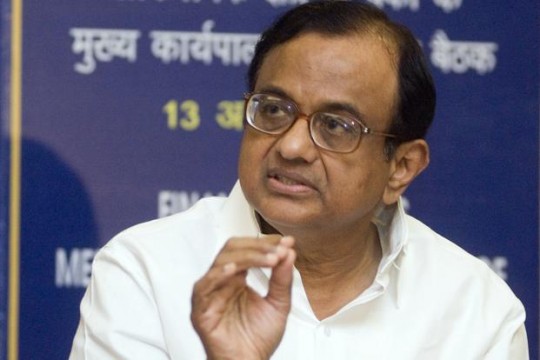
Stating that country’s potential growing rate is 8 per cent, Indian Finance Minister P Chidambaram Thursday asked the Non Resident Indians (NRIs) to invest in India as it is safe investment destination.
New Delhi, Nov 21/Nationalturk – Indian Finance Minister P Chidambaram Thursday assured Indian diaspora community in Singapore that India country was a safe investment destination and asked the non resident Indians to invest in the country, whose potential growth rate is 8 per cent.
“India’s potential growth rate is 8 percent and above. In the best year, the savings rate was 36.8 percent and the investment rate was 38.1 percent. In the worst years, the savings and investment rates were 30.8 percent and 32.8 percent respectively. Between 2005 and 2008, India achieved its potential – in fact exceeded it – and recorded growth rates of over 9 percent. During 20-year period from 1991 to 2011, the average growth rate was 7 percent,” Chidambaram said while addressing opening session of South Asian Diaspora Convention, 2013 in Singapore, which was attended by over 1000 delegates.
Indian diaspora estimated at over 20 million
The Indian diaspora is estimated at over 20 million. While it is only 2 percent of India’s population, their total wealth is estimated at USD 1 trillion which is nearly 50 percent of India’s GDP. Of the USD 1 trillion, one-half is estimated to be financial assets. The income of the Indian diaspora is estimated at USD 400 billion a year.
Chidambaram said the key to sustain a high growth rate is investment. “Other factors are also important. The fiscal deficit must be contained below the widely-accepted norm of 3 percent of GDP. The Current Account Deficit must be capable of being financed safely. Inflation, even allowing for the space required by a developing economy, must be moderate. The exchange rate must be resilient even while it is insulated against speculative attacks and excessive volatility.”
Maintaining that it is investment that determines the growth rate of an economy, he said, “I believe there is no country in the world that requires so much investment as India does in virtually every sector of the economy.”
India can offer many investment opportunities to investors
“India can offer to the investor a variety of investment opportunities. There are government securities and corporate bonds. There are mutual funds and Infrastructure Development Funds. We can offer equity in our public sector enterprises that are under the disinvestment programme. There is a clutch of projects in the oil and gas sector that will welcome strategic investors. Shortly, we will offer a public sector Exchange Traded Fund that will allow you to buy units backed by underlying equity shares. Private promoters have offered a number of specific projects in sectors such as roads, power, urban infrastructure, ports and water transportation, and in Special Economic Zones,” Indian finance minister said.
He said India has taken number of measures to stabilize the economy and give greater confidence to the investors. “Last year, I announced a new fiscal consolidation path under which the fiscal deficit would be contained at 5.3 percent in 2012-13 and reduced every year until it reached 3 percent in 2016-17. At the end of March, 2013, we did better than the target and the fiscal deficit was contained at 4.9 percent. For the current year, I have drawn a red line at the original target of 4.8 percent and I have made it clear that the red line will not be breached under any circumstances. The Current Account Deficit for 2012-13 was at a challenging level of USD 88 billion. In the current year we have taken a number of measures – some of them like compressing gold imports have already yielded results – and I am confident that the CAD will be contained at a level well below USD 60 billion and that it will be fully and safely financed.”
Volatility of Indian currency largely contained
On drop in Indian currency value, Chidambaram said, “The exchange rate witnessed a period of considerable volatility during May to August this year. The Reserve Bank of India took number of steps to prevent the decline of Indian currency. We believe that the exchange rate of the rupee today is a better reflection of its true value and we are confident that both volatility and speculation have been largely contained. The excellent market response to the rupee bond floated by IFC two days ago indicates market confidence in the Indian rupee, although I would hesitate to draw conclusions at this stage.”
He disclosed that eleven million Indians live and work in Asia and the Middle East. “Of these, 5.9 million are in the countries of the Middle East, there are 2.0 million in Malaysia and 500,000 in Singapore. The bulk of them are unskilled or semi-skilled workers. Nevertheless, they have high savings and they remit a large amount of money to their families in India.”
Overseas remittances rose from USD 2 bn in 1991 to USD 70 bn in 2013
“Since 2003, India has been the largest recipient of overseas remittances. Remittances rose from a modest USD 2 billion in 1991 to USD 70 billion in 2013. Indian banks offer attractive products to non-resident Indians. Among them is the famous FCNR(B) scheme. Two months ago, the Reserve Bank opened a special window to attract more funds into FCNR(B) and I am happy to report that the scheme, which will close on November 30, 2013, has received USD 16 billion. The FCNR(B) allows the account holder to retain his deposits in foreign currency and earn interest at a rate up to LIBOR plus 400 bps.”
Indian finance minister asked the Indian diaspora to invest in the country and be part of the unfolding India story that will make India the third largest economy, even in nominal terms, by the year 2030.
Write your comments and thoughts below
Faiz Ahmad / NationalTurk India News

